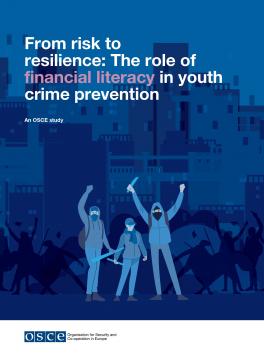Resources
From risk to resilience: The role of financial literacy in youth crime prevention

To evade prosecution, organized crime groups are increasingly targeting recruitment efforts towards young people under the age of criminal liability. The COVID-19 pandemic and security developments across the OSCE area exacerbated socio-economic vulnerabilities and risk factors, making young people more susceptible to being recruited into criminal networks and activities. This can put them on a path to long-term criminality, with significant consequences for themselves, victims, criminal justice systems and society as a whole. Research shows that by the age of 25, a single “multiple offender” has had – on average – 100 victims and generated EUR 1.7 million in social follow-up costs.1 Investing in effective youth crime prevention and strengthening youth resilience from an early age therefore have major economic and societal benefits, and contribute to good governance and the rule of law.
This report builds on the OSCE’s longstanding focus on youth development and crime prevention, emphasizing the need for targeted strategies to mitigate vulnerabilities. The OSCE’s commitment to promoting the role and inclusion of youth in its security agenda dates back to its founding document, the Helsinki Final Act, and has been strengthened though many subsequent OSCE decisions. The OSCE’s mandate in combating organized crime underscores prevention as a key approach, as reaffirmed in the 2020 Tirana Declaration, which calls for a multi-stakeholder and gender-sensitive response.
The views, opinions, conclusions and other information expressed in this document are not given nor necessarily endorsed by the Organization for Security and Co-operation in Europe (OSCE) unless the OSCE is explicitly defined as the Author of this document.
